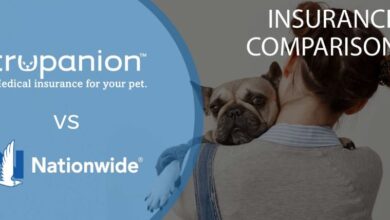How Does Breed Impact the Cost for a Pet insurance?

Pet insurance : Pet ownership is an enriching experience, filled with companionship, joy, and the occasional challenge.
One of the most significant responsibilities of pet ownership is ensuring your furry friend has access to quality healthcare.
This is where pet insurance comes into play. However, when it comes to pet insurance, not all pets are created equal—your pet’s breed can have a profound impact on the cost of insurance and the coverage options available. In this comprehensive guide, we will delve deep into how breed influences pet insurance premiums and coverage, the health issues specific to different breeds, and provide practical tips for choosing the right policy for your beloved pet.
Understanding Pet Insurance
What is Pet Insurance?
Pet insurance is a financial product designed to help pet owners cover the cost of veterinary care. Depending on the policy, pet insurance can cover various services, including:
- Accidents: Injuries from falls, bites, or other mishaps.
- Illnesses: Coverage for diseases or infections.
- Preventive Care: Routine check-ups, vaccinations, and other preventive measures.
Understanding the various types of coverage is vital for selecting the right plan for your pet.
Types of Pet Insurance Plans
- Accident-Only Plans: These plans cover injuries due to accidents but exclude illnesses.
- Comprehensive Plans: These policies cover both accidents and illnesses, and often include preventive care.
- Wellness Plans: Focused on preventive care, wellness plans usually cover vaccinations, flea prevention, and annual check-ups.
Importance of Understanding Coverage
Before selecting a plan, it’s essential to comprehend the details of each type of coverage. Not all policies cover the same conditions, and understanding these differences can save you money and ensure your pet receives the necessary care.
How Breed Affects Insurance Costs
Risk Assessment by Breed
Insurance companies rely on historical data to assess risk associated with insuring a particular breed. Some breeds have known genetic predispositions to health issues, leading insurers to adjust premiums accordingly.
Common Health Risks by Breed
- Brachycephalic Breeds: Breeds such as Bulldogs, Pugs, and Boxers are prone to respiratory problems due to their short noses. This breed group can lead to significantly higher insurance premiums because of the likelihood of health complications.
- Large Breeds: Breeds like Great Danes and Mastiffs often face health issues related to their size, including hip dysplasia and joint problems, which can be costly to treat.
- Hereditary Conditions: Many breeds come with specific hereditary conditions that can impact insurance costs. For instance, Golden Retrievers are known for having a higher incidence of cancer, which influences their insurance premiums.
Premium Variations by Breed
Insurance premiums can differ dramatically based on the breed of your pet. Here’s a breakdown:
- High-Premium Breeds: Breeds like Rottweilers and Doberman Pinschers may see premiums that are 20-40% higher than breeds with lower health risks, such as Beagles or Shih Tzus.
- Low-Premium Breeds: Breeds like Basenjis and Whippets, which typically have fewer health problems, generally have lower insurance premiums.
The Average Cost of Pet Insurance by Breed
To provide clarity on costs, here’s an estimated annual breakdown based on breed categories:
- Small Breeds: $250 – $400 (e.g., Chihuahua, Pomeranian)
- Medium Breeds: $400 – $600 (e.g., Beagle, Bulldog)
- Large Breeds: $600 – $1,200 (e.g., Labrador Retriever, Rottweiler)
- Giant Breeds: $1,200 – $2,000 (e.g., Great Dane, Mastiff)
Geographic Location and Breed Impact
Your location can significantly affect the insurance costs for your pet. Urban areas often have higher veterinary costs, thus leading to increased premiums. For example, a Boston Terrier may cost more to insure in New York City than in a rural setting, where vet fees are generally lower.
Coverage Limitations Based on Breed
Breed-Specific Health Issues
Certain breeds are more prone to specific health conditions. Here’s a deeper dive into common breeds and their associated health risks:
- Golden Retrievers: Known for hip dysplasia and certain types of cancer.
- Dachshunds: Susceptible to intervertebral disc disease due to their elongated spines.
- Cavalier King Charles Spaniels: Prone to heart issues, particularly mitral valve disease, making insurance coverage crucial.
Understanding these risks helps in choosing a policy that covers potential health issues specific to your pet’s breed.
Waiting Periods and Exclusions
Most pet insurance policies have waiting periods, typically ranging from 14 to 30 days, before coverage begins. Furthermore, if a breed is known for certain hereditary conditions, these may be excluded from coverage altogether. For instance, if a Labrador develops hip dysplasia after purchasing a policy, the insurer may not cover the treatment costs if the condition is considered hereditary.
Pre-existing Conditions
Most insurance providers will not cover pre-existing conditions. If your breed is known for specific health concerns, it is essential to ensure your pet is healthy at the time of policy purchase. Additionally, insurers often categorize conditions as pre-existing if they show symptoms before the policy’s start date, regardless of whether a formal diagnosis has been made.
Factors Affecting Insurance Costs Beyond Breed
While breed plays a crucial role in determining insurance costs, several other factors can influence overall premiums:
Age of the Pet
- Younger Pets: Generally, younger pets have lower insurance premiums, as they are less likely to have health issues.
- Older Pets: As pets age, they often develop health problems that can lead to higher premiums.
Gender
Some studies suggest that male pets may incur higher insurance costs due to a higher likelihood of certain health issues. However, this can vary significantly depending on the breed and individual pet.
Lifestyle Factors
- Activity Level: Pets that are more active may face a higher risk of accidents and injuries, which could impact insurance costs.
- Living Conditions: Pets living in high-risk environments (like busy urban areas) may also face higher premiums.
Veterinary Care Costs
In addition to breed, the average cost of veterinary care in your area can significantly impact insurance premiums. Regions with higher veterinary costs will typically have higher insurance premiums.
Choosing the Right Pet Insurance for Your Breed
Researching Insurance Providers
When selecting pet insurance, it’s crucial to compare multiple providers to find the best coverage for your pet’s breed. Look for:
- Customer Reviews: Feedback from other pet owners can provide insight into the company’s service and claims process.
- Coverage Options: Ensure that the plan covers breed-specific health issues.
Understanding Policy Terms
- Deductibles and Co-pays: Understand how much you’ll need to pay out of pocket before the insurance kicks in.
- Annual Limits: Be aware of any annual limits on coverage, as this can significantly impact your out-of-pocket costs.
Consulting with Your Veterinarian
Your veterinarian can provide valuable insights into the health risks associated with your pet’s breed and may have recommendations for suitable insurance providers based on their experience with other clients.
Real-Life Examples of Breed Impact on Insurance
To further illustrate how breed impacts pet insurance costs and coverage, consider the following real-life scenarios:
Scenario 1: Brachycephalic Breeds
Meet Max, a 3-year-old French Bulldog. Max’s owner decided to purchase pet insurance due to the breed’s known respiratory issues. After researching, she found that insurers classified French Bulldogs as high-risk, resulting in a premium of $800 annually. The policy offered limited coverage for respiratory issues due to breed exclusions, highlighting the importance of understanding breed-specific health risks.
Scenario 2: Large Breed
Rex, a 6-year-old Labrador Retriever, has developed hip dysplasia—a common condition in his breed. His owner had purchased comprehensive insurance for $600 annually. While the policy covered most vet visits, the exclusion of hereditary conditions meant that Rex’s treatment for hip dysplasia was out of pocket, costing his owner an additional $1,200.
These examples illustrate the financial implications of breed on pet insurance decisions and reinforce the importance of thorough research before choosing a policy.
Frequently Asked Questions (FAQs) About Pet Insurance and Breed Impact
1. Does my pet’s breed really affect insurance costs?
Yes, the breed can significantly influence insurance premiums due to different health risks associated with specific breeds.
2. Can I get insurance for a breed with known health issues?
Yes, but it’s essential to understand that pre-existing conditions may not be covered, and certain policies may exclude breed-specific issues.
3. What should I look for in a pet insurance policy?
Consider coverage options, premium costs, deductibles, exclusions, and the insurer’s reputation. Look for policies that cover common health issues related to your pet’s breed.
4. Are there any breeds that are not insurable?
Some insurance providers may not insure certain high-risk breeds. It’s best to check with individual companies for their policies regarding specific breeds.
5. How can I save on pet insurance premiums?
You can save by opting for higher deductibles, paying annually instead of monthly, and choosing a policy that covers only essential services.
6. Is pet insurance worth it for healthy pets?
Even healthy pets can experience unexpected health issues or accidents, making insurance a valuable safety net.
7. What if my pet is older?
Older pets can still be insured, but premiums may be higher, and coverage for pre-existing conditions is likely limited.
Conclusion
In conclusion, the breed of your pet plays a crucial role in determining the cost and coverage of pet insurance. By understanding the unique health risks associated with different breeds and considering factors like age, location, and lifestyle, you can make an informed decision about the best insurance policy for your furry friend. Remember to do your research, consult with your veterinarian, and choose a plan that provides adequate coverage for your pet’s specific needs.
LEARN MORE :



